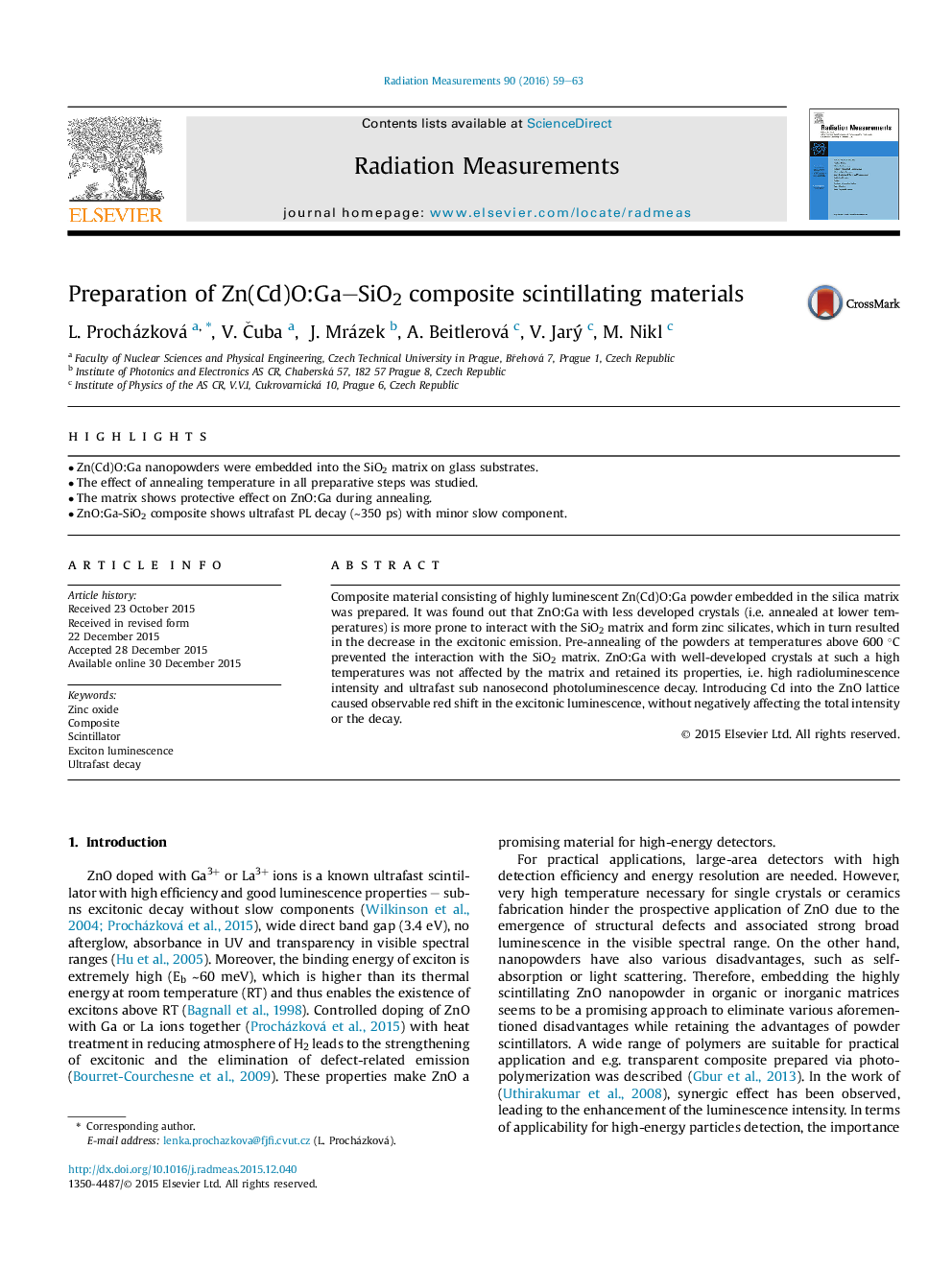| Article ID | Journal | Published Year | Pages | File Type |
|---|---|---|---|---|
| 1888011 | Radiation Measurements | 2016 | 5 Pages |
•Zn(Cd)O:Ga nanopowders were embedded into the SiO2 matrix on glass substrates.•The effect of annealing temperature in all preparative steps was studied.•The matrix shows protective effect on ZnO:Ga during annealing.•ZnO:Ga-SiO2 composite shows ultrafast PL decay (∼350 ps) with minor slow component.
Composite material consisting of highly luminescent Zn(Cd)O:Ga powder embedded in the silica matrix was prepared. It was found out that ZnO:Ga with less developed crystals (i.e. annealed at lower temperatures) is more prone to interact with the SiO2 matrix and form zinc silicates, which in turn resulted in the decrease in the excitonic emission. Pre-annealing of the powders at temperatures above 600 °C prevented the interaction with the SiO2 matrix. ZnO:Ga with well-developed crystals at such a high temperatures was not affected by the matrix and retained its properties, i.e. high radioluminescence intensity and ultrafast sub nanosecond photoluminescence decay. Introducing Cd into the ZnO lattice caused observable red shift in the excitonic luminescence, without negatively affecting the total intensity or the decay.
